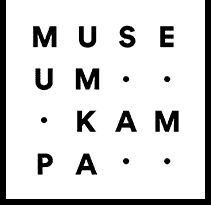The sculptor and ceramist Hana Purkrábková (1936–2019) belongs to the generation of artists that emerged in the 1960s. Along with applied ceramics, she devoted herself to ceramic figure sculpture. Working first with small-format sculpture in the 1980s, she eventually had the space to produce more extensive works. At the centre of Purkrábková’s art, starting with her earliest works, we find human life and its environment, augmented by that of the dogs and cats which were always close by. Bringing together her intimate knowledge and understanding of both these worlds, she extrapolated poignant analogies in her work.
In her sensitive, spontaneous approach to modelling with ceramic clay, and uniquely natural handling of this pliable material, she was guided by her gift of observation and keen visual memory. She was able to capture bits of on unguarded gestures and banal situations from her observations of human behaviour, marked with her kind sense of humour and mischievous irony. In this way, she gave life to amusing instances of human weakness and depravity, along with emptiness of mind and spirit, expressions of deceitfulness, cunning, malice, and aggression. The sense conveyed by Purkrábková’s figures and bizarre creatures often leads us to think about ourselves – to think about our life and the contemporary world. In this regard, her art is comprehensive and unusually coherent in its conceit.
From the immediacy of vision, Purkrábková’s approach to developing the artistic form was also based in large part on ‘potter’s’ principles of modelling. She used them to build bodies from the inside out to convey their bulging physicality, punctuated with poignant detail and colour.
The living source of her distinctive artistic expression is a sense of humour and innate feeling for the humane and social. Indeed, they can be found throughout her large-format drawings and working sketches, which are an integral part of this exhibition.
Mahulena Nešlehová

